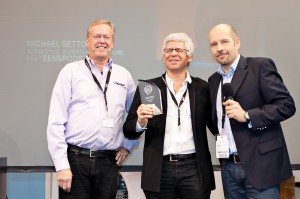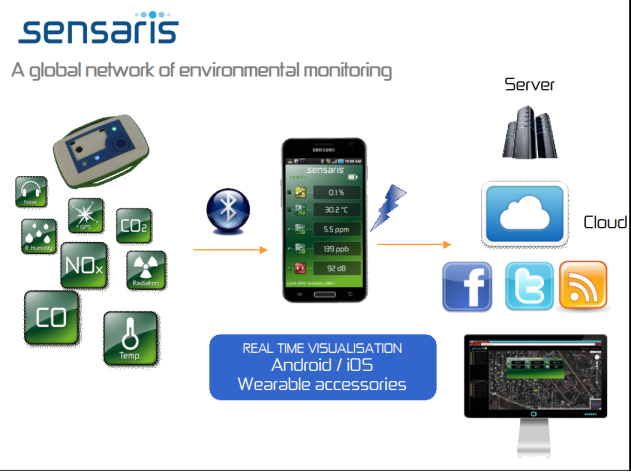Integrated solution initially targets fine particles and indoor air quality monitoring. Appcessories are designed to be compatible with both iPhone and Android platforms.
There is growing interest for air quality monitoring as the recent controversy in London or the need for Chinese cities to publish fine particles levels recently revealed. Citizens and communities are increasingly aware of the correlation between personal exposure to environmental pollution and health.
After pilot projects and deployments in 15 cities on 4 continents, Sensaris is now launching the first global network for air quality monitoring based on cloud technologies and smartphones.
Environmental data such as noise, CO2, CO, fine particles, humidity, temperature, along with positioning information is sent wirelessly to iPhones (starting this summer) or Android mobile devices. Users can choose to store data on the phone, send it to a server for real time mapping or store it locally on the Senspod’s memory card for later or periodic automated transfer. The patent pending solution will now enable citizens to monitor indoor and outdoor air quality and compare or share results via social networking applications. For smart city services, pocket sized Senspods have been used by pedestrians, mounted on vehicles (bicycles, cars) or placed on urban furniture. The scalable architecture combined with the ease of use the mobile application and web based interface ensure easy deployment.
Michael Setton, CEO indicated: “In many cases there are more sensors in a car than air quality monitoring stations in a city. After getting a boost from the Bluetooth Innovation world Cup in January, we are very excited to deploy Senspods in several new cities this summer. Our devices and software will provide citizens and communities with new means of improving air quality, and the use of social networking tools will foster exchange of ideas and solutions on a global scale. This is an important step in increasing people’s engagement to bring local solutions to this growing issue. In subway stations our sensors can be combined with LED lights to provide energy savings and environmental information to citizens. For more than 9000 metro stations worldwide, public transportation users could soon get real time indoor air quality values on their mobile phones.”









